When archeologists scramble through the wreckage of ancient places, they seek the dumps of those civilizations. Since North Omaha isn’t ancient, nobody is digging up these places looking for fascinating relics of times gone by. However, when the eons go by and future civilizations look back on the community for evidence, I want to make it easy for them to find interesting places. This is a history of dumps in North Omaha.
Understanding Omaha’s Trash

From the earliest settlements at Cutler’s Park and Winter Quarters in 1846 through today, there have been legal and illegal dumps throughout North Omaha. Except for the large, legal dumps, most of these places have disappeared from history, alive only in the imaginations and faintest memories of the very old. However, the historical record took note of these dumps throughout time.
The original city dump was at the foot of Jones Street on the Missouri River. In the 1880s, it was moved to the foot of Poppleton Street. People from North Omaha, which then extended as far as Lake Street, might have brought their large trash there. Their regular trash would’ve been burned or dumped in a nearby creek bed.
“The rich speculate in stocks, bonds, land and grain. The dumps are the fields of speculation for Omaha’s poorest of the poor.”
– “A Visit to the City Dump,” Omaha World-Herald, April 5, 1891
In the 1890s, the City of Omaha Board of Health took steps to increase the number of sanitary inspectors from four to nine. Distraught at the growing amount of illegal dumping on the north side of the city, the members weren’t confident the expenditures would make a difference. According to the newspapers, they were right to be concerned. Concerned about the impoverished and destitute living in the dumps, these were steps taken to abate the guilt of the wealthy and middle class Omahans whose consciences were haunted.
By 1951, the City of Omaha enacted a law making dumps within the city limits illegal, as well as prohibiting any dumps within three miles of the city limits.
Picking was always popular in Omaha’s dumps, and the historical record has a lot of stories of people who lived off things they found in the area’s dumps. These dumps were more than a pile of trash, too: They’re notable because they were mentioned in the news several times, had citywide notoriety, and were largely deemed public health nuisances at some point.
Down in the Dumps
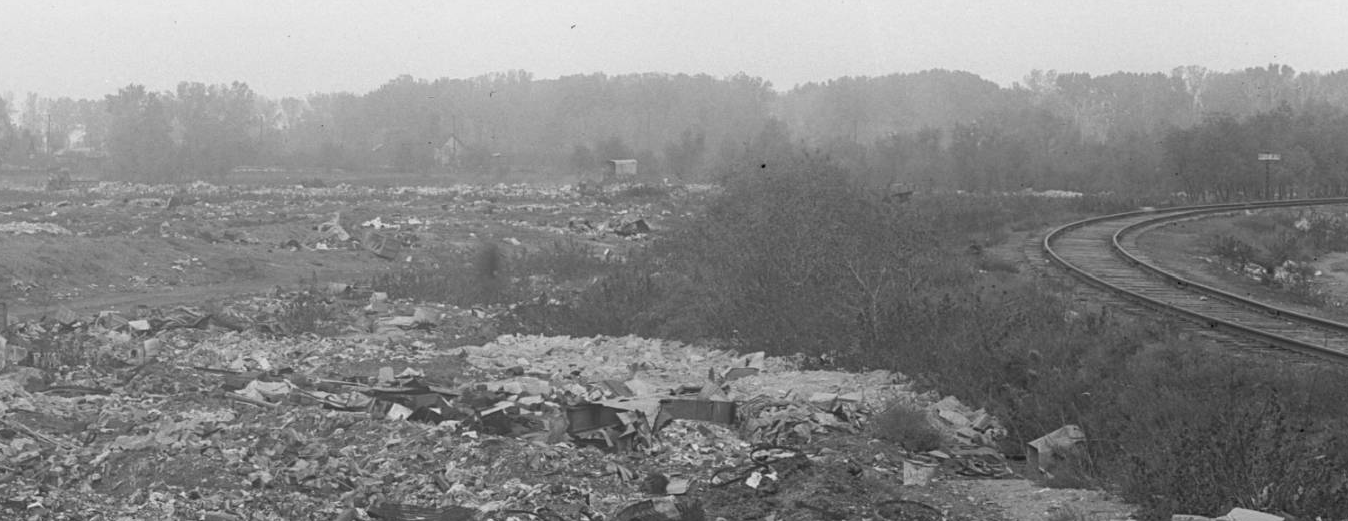
Here are details on some of the dumps in North Omaha’s history. This isn’t a definitive account though: If you know of more dumps, please leave a comment below!
Florence Dumps
Perhaps the original Florence Dump, it was the 1920s when the dump at North 30th and “McKinley Street” (now McKinley Drive) was closed. In 1948, the City of Omaha agreed to shut a nearly 100-year-old dump in the Wyman Heights neighborhood in Florence. Used by area residents to rid themselves of trash big and little, it wasn’t the only dump in Florence. Another was closer to town and located at 7200 North Ridge Drive. One of the first landfills in Omaha was the River Road Dump, located just north of the Mormon Bridge along the River Drive, aka JJ Pershing Drive. Opened in 1942, it was one of the first dumps to employ a tractor to push dirt over the top of trash. However, it was closed after nearby residents protested the impact on their homes.
North Omaha Bottoms Dumps
In 1949, the newspaper told the story of “Hairless Joe” who was found living in a discarded cardboard box at a dump at North 11th and Nicholas Street. “You can’t go hungry down there,” explained Hairless Joe. “There’s plenty in old jars and tin cans. ‘Course you gotta be careful what you pick.” The newspaper shared stories of dumps all along 11th Street, at Nicholas Street and Seward Street and north at Locust Street.
There are plenty of stories of how terrible the North Omaha Bottoms were, and the reality of people living among trash and squalor there isn’t hard to imagine.
East Omaha Dumps
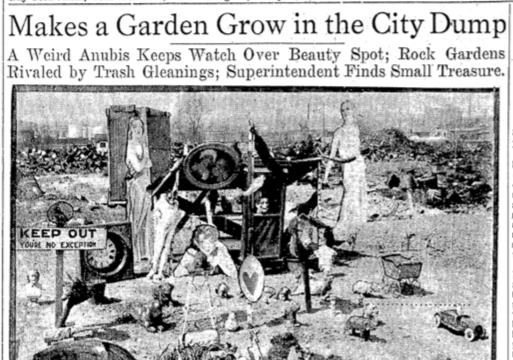
Starting in the 1880s when the East Omaha town began, there was a dump in East Omaha. However, it moved around several times, and at times there was more than one.
There was a different dump located at North 11st Street and Locust from the 1890s through 1950, when the site was cleared and used for the Airport Drive-In. The dump site was filled in with dirt and paved by January 1951. On the south end of North 25th Street East in East Omaha, the official East Omaha Dump operated illegally with permission from the City of Omaha for more than 25 years.
In 1915, the Union Pacific Railroad announced the construction of a railroad spur north of Carter Lake “to give access to the new garbage and refuse dump.” Beginning in that era, there was an oil refuse dump installed at North 5th and Avenue H. Seemingly regular fires happened there over the years.
Another dump was opened in 1951 at North 15th Avenue East and Avenue J in 1950, but closed in 1952 when the area flooded. That land was leased by the City of Omaha from Leo Kubik, who had to sue the City to recover the costs of cleaning up the site after it was abandoned. During this era, the residents of Carter Lake, Iowa, complained nonstop about the dumps nearby their homes. However, they Village of Carter Lake had no dump of its own and residents relied on the Omaha dumps to get rid of their trash.
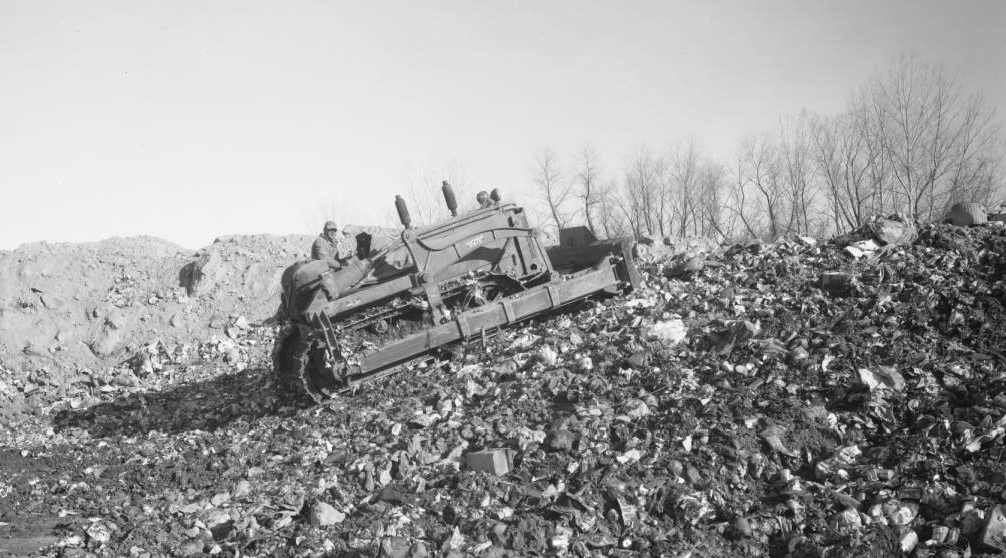
The East Omaha Dump opened back up in 1952, and stayed open for several years. However, that same year the Nebraska Health Department took steps to close four private dumps in East Omaha, after a letter writer claimed there were “no less than 15 illegal rubbish dumps and feeders of raw garbage to pigs in the East Omaha area.”
Between 1963 and 1967, the City of Omaha was involved in a contentious proposal by Lawrence V. Bowley. The Bowley Landfill was planned to be located on 512-acres east of the Municipal Airport. Eugene Eppley, who’s foundation donated $1,000,000 in the 1960s to the airport, objected mightily to the landfill and suggested to the Omaha City Council that if the landfill opened donations for the city’s project would dwindle. In 1967, the council completely withdrew the proposal for the landfill there. The airport developed a fund to buy the land though, and eventually succeeded in acquiring it. No landfill was even placed in that section of East Omaha.
Saratoga Dump
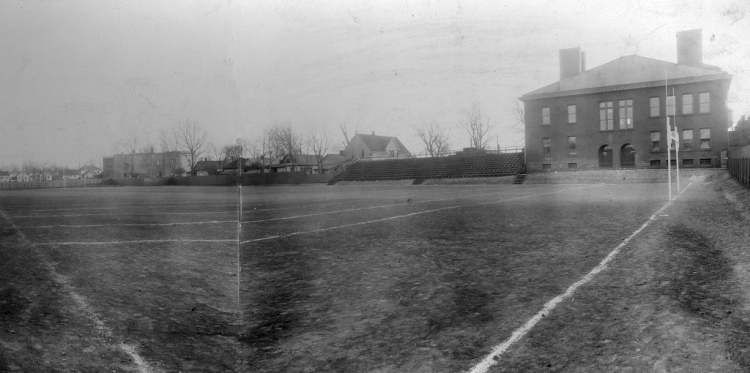
Also called the Saratoga dump, this was located on the southwest corner of North 22nd and Meredith Avenue. Starting in 1856 when the town of Saratoga was founded, records show people dumped trash on the edges of the creek that flowed through this area, which was just a few block away from the town’s center at North 24th and Grand Avenue.
Forty years later, after the turn of the century and the wearing away of excitement from the 1898 Trans-Mississippi Exposition just south of the then-neighborhood, the creek was covered up with trash and rubble and on the southwest corner of North 22nd and Meredith Avenue, acted like a dump. Around that time, the dump became an issue when sicknesses were attributed to its proximity to the houses around it. The dump was on the same block as the Saratoga School then, which sat on the northeast corner of 24th and Ames Avenue.
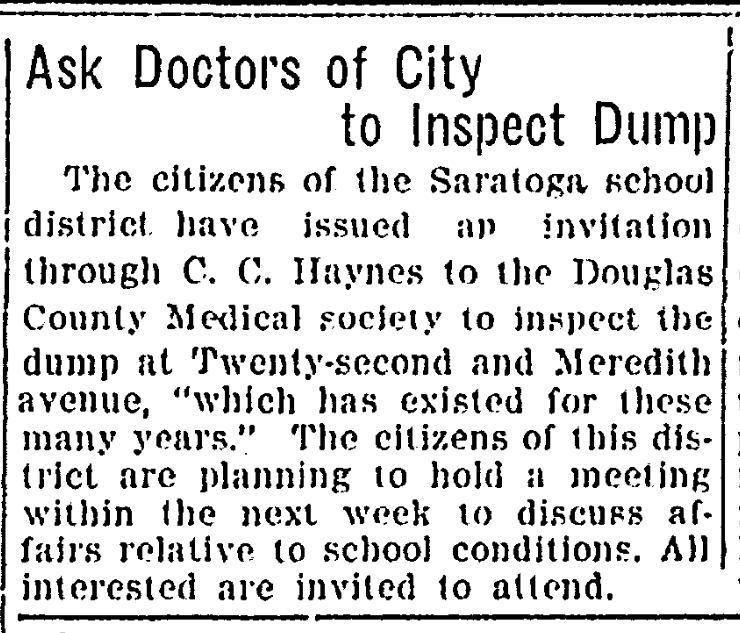
In 1914, smallpox was ravaging Omaha. That year, the Omaha Physicians Council started placing signs on houses in the Saratoga neighborhood around the dump proclaiming the disease had infested the homes. However, parents in the neighborhood fought back against the quarantines because there weren’t as many diseased houses as the physicians proclaimed, and because all of the students in Saratoga School were up-to-date on their vaccinations. To cure the neighborhood of the disease, a group of parents advocated the removal of the dump. Putrid water there was breeding smallpox and other diseases, and with more than 200 students expelled from Saratoga School by the physicians’ group, the parents collected signatures for a petition to the Omaha City Council saying the dump had to go. This went against the City of Omaha physician, who sided with the physicians’ council and certified the dump to keep existing. To “remove” the dump, parents sought to have the old creek bed filled in and to turn the location into a school playground. Their petition worked, and by September dirt from street grading work in the area and been used to in-fill the creek.
However, a trial was held in 1917 that implicated the dump again. The Omaha Bee reported, “the parents asked that the City be stopped from expelling students from school, stopped from tacking up smallpox signs in front of homes without the disease, and stopped from encouraging the upkeep of the dump.” The dump was described during the trial. One resident, “…testified that tin cans, dead dogs and cats, garbage and street refuse were thrown on this dump and that the odor is noticeable even blocks away… The water in this dump… is green and stagnant and is near the Saratoga school…” The school principal, several residents and others testified, too. However, the parents lost the trial when a local judge ruled the City’s health authority had every right to do whatever was necessary to stop smallpox, including expelling students, marking houses and keeping the dump open.
“The odor from the place can be smelled for a block, and in summer it is so strong that we can’t sit on our front porches.”
–Ezra W. Field of 2216 Meredith Avenue, Omaha World-Herald, March 23, 1917
Despite the ruling that the dump was okay though, in late 1917, the dump was shut down and the spot was turned into a play field for students, complete with grass and fencing. Ten years later the old school was repurposed as the Omaha University Science Hall. The old dump was repurposed to become the football field for the University of Omaha, and was used intermittently for that purpose until 1951. That year it was removed, and today the location is a concrete parking surface for the trucking company located there today.
Gifford Park Dump

Starting in 1914, residents around the intersection of North 30th and Cuming Street began agitating against the city dump located on the southwest corner of the intersection. Then just two lanes on each street, the dump would’ve been located in today’s eastbound lanes of Cuming Street.
Opened in the 1860s, the dump was more than 50 years old by the time the protests began. With expensive housing surrounding the site along Lincoln Boulevard and in the Gifford Park neighborhood, it should’ve been no surprise the disruption would get loud. With loud speeches at the Omaha City Council meetings, orders to the superintendent of police, sanitation and public safety, and demands of the health commissioner to take action, the dump disappeared quickly.
Speaking of the dump, Commissioner Hummel said, “It looks like hell with one eye open.”
The dump was located on a creek that started in a swampy area or small lake in what is today Gifford Park, flowing eastward from North 34th Street. When it reached Cuming Street, it flowed along the south side of the street toward the river. At that junction, locals simply dumped their trashiest trash, including old metal things, broken furniture, dead animals and more. Manure and ashes were piled there, too. As you can imagine, it was a mess.
The dump was cleaned up in 1914. However, just a year later residents were complaining of its filth again. Speaking in front of the city council, one resident called for an armed guard to stop dumping there.
The creek was cleaned and sat open again for just a few years, until the ultimate step was taken to solve the problem. The construction of Technical High School right on top of the creek starting in 1917 came on the heels of the last abatement of the dump. Residents were proud and excited to have a large, sophisticated educational institution opened on the site in 1920. With the creek sunken beneath the building and hidden in a pipe to the river, there was no evidence a dump had ever been there, immediately erasing all bad feelings towards the city.
In 1968, the City of Omaha sponsored several staff-free littler pick up sites throughout North Omaha that were quickly misused by commercial dumpers and others. In addition to North 59th and Laird and other sites, one of them was on the northwest corner of North 30th and Cuming. The irony of that a major dump was located at the intersection for 50 years seemingly escaped every news report of the incident.
Missouri River Dump
Since the beginning of Omaha in 1854, people dumped trash along the Missouri River from today’s location of the Mormon Bridge all the way to Dodge Street, and much further south. By the 1880s, city engineers were trying to figure out how to discourage a regular dump to be developed in the North Omaha bottoms by the river. In the 1930s, the City of Omaha developed a formal plan to permit dumping in the river as a reasonable way to dispose of unwanted refuse. At the same time, they were operating a major dump at North 5th and Seward next to the river. In 1952, the Douglas County Health Department wanted to start testing the water of the river because of the dumping. Complaints by the City of Bellevue and Nebraska City led to threats of boycotts and more, but the City of Omaha remained unwavering. They also responded to the health department by saying the county didn’t own the right testing equipment.
Other Dumps in North Omaha

There were many, many dumps in North Omaha. For almost 100 years, until the 1950s, each of the small towns and large neighborhoods throughout the community had their own dumps, including Saratoga, the Near North Side, Florence, Bedford Place, Kountze Place and Minne Lusa. The official city dump for North Omaha was at 5th and Davenport Street until 1890, when the owners of the smelting company asked for it to be moved because it stank so badly.
All the local creeks in North Omaha were popular dumping sites, and in the 1870s the North Omaha Creek by Cuming Street was in-filled with trash. In the 1990s, the Minne Lusa Creek south of the OPPD plant was cleaned out of trash and lined with concrete, partially to stop pollution through illegal dumping.
For more than 50 years, there was a dump at Saddle Creek Road and Hamilton. In the late 1930s, the City of Omaha proposed that the WPA from the Carter Lake CCC Camp clean, fill and beautify the dump there in order to build the community. They did, and the neighborhood moved forward. In 1939, a group of residents proposed the city create a supervised dump on the west side of North 40th Street between Charles and Seward Street. The dump was opened and closed by the 1950s. Today, there’s a Family Dollar store on the site.
The Springwell Danish Cemetery at North 64th and Hartman was used as an illegal dump through the 1960s and into the 70s. In 1972, the City of Omaha cleaned the mess and it hasn’t returned since. That same year in 1972, the Douglas County Public Works turned down a landfill application for 8816 North 36th Street outside Florence. An illegal dump had been operating there since the 1940s, and was said to be primarily debris from building demolitions around Omaha.
The Meece Landfill was an illegal dump the City of Omaha used for decades. Located across the Mormon Bridge in Iowa, apparently the Council Bluffs city staff weren’t aware Omaha was still using it in 1975 when the federal Environmental Protection Agency shut it down. After it closed permanently, all the City’s trash went to the County landfill at North 126th and State Street, which operated through the 2000s.
In the 1990s, a group called the Inner-City Coalition for the Environment, or ICE, facilitated annual cleanups for dozens of sites in the annual Illegal Dump Clean Up Blitz. WIth at least 20 potential sites in North Omaha every year, organizations and businesses donated money and volunteer hours to clean up the community.
Pickers in the Dumps

“One man’s trash is another man’s treasure,” goes the old saying.
According to a 1972 newspaper article, “Foraging in the dumps is hardly a new past time… Omaha’s old city dump on the river bank between Grace and Locust was populated by hardy enterprisers who actually lived there and supported themselves by selling whatever they could scavenge from refuse. Queen of the dump was a woman called The Swamp Angel.”
Scavenging was also popular in the East Omaha Dump on North 25th Avenue East. There are countless stories of days past when people would pick on certain days for particular items, and sometimes come up with gold for their time and energy.
From the 1880s through the 1940s, an African American man named Lon Stone lived in a house he built at the city dump in Winspear Triangle. In the late 30s, his home was threatened with removal by the City of Omaha when they wanted to built the Port of Omaha there. They did just that in the late 1940s. Others’ homes were removed from the dump, too, including E. H. McCoy, August Renner, Gus Kuehn, and Mr. and Mrs. Joseph Bell.
The Legacy of Trash
As history students know, some of the best stories of the past come from a city’s trash. The locations of some of the dumps above may still have trash in them. However, the value of excavating these places is negligible, especially since they don’t really hold artifacts that are important yet. However, in centuries to come this opinion might change.
As for now, it may be enough for students of the history of North Omaha to remember these places existed at all, and to remember part of what made Omaha great — its trash.
A Tour of North Omaha Dumps
- North Omaha Bottoms (various locations)
- North 11th and Nicholas Street, northeast corner
- North 11th and Seward Street
- North 11th and Locust Street, southwest corner
- Florence
- North 30th and “McKinley Street, now McKinley Drive (est 1846-1920s)
- Wyman Heights (est 1848-1948)
- 7200 North Ridge Drive
- Model Dump, North River Road (1942)
- Saratoga
- North 22nd Street and Meredith Avenue, southwest corner
- East Omaha
- East Omaha Dump, south end of North 25th Street East (est 1890-1950; 1952-1957)
- Carter Lake Dump, North 4th and Fort Street
- Oil Refuse Dump, North 5th and Avenue H
- North 15th Avenue East and Avenue J (1950-1952)
- Gifford Park
- North 30th and Cuming Street, southwest corner
- Missouri River (various locations)
- Locust Avenue at the Missouri River
- Seward Street at North 5th Avenue
- Manure Dump, Webster Avenue and Missouri River (1886-1910)
- Saddle Creek and Hamilton Avenue
- North 40th and Charles Street
You Might Like…
- A History of Squatter’s Row In North Omaha
- A Biography of Granny Weatherford
- A History of Streets in North Omaha
- A History of Lost Towns in North Omaha
BONUS PICS!
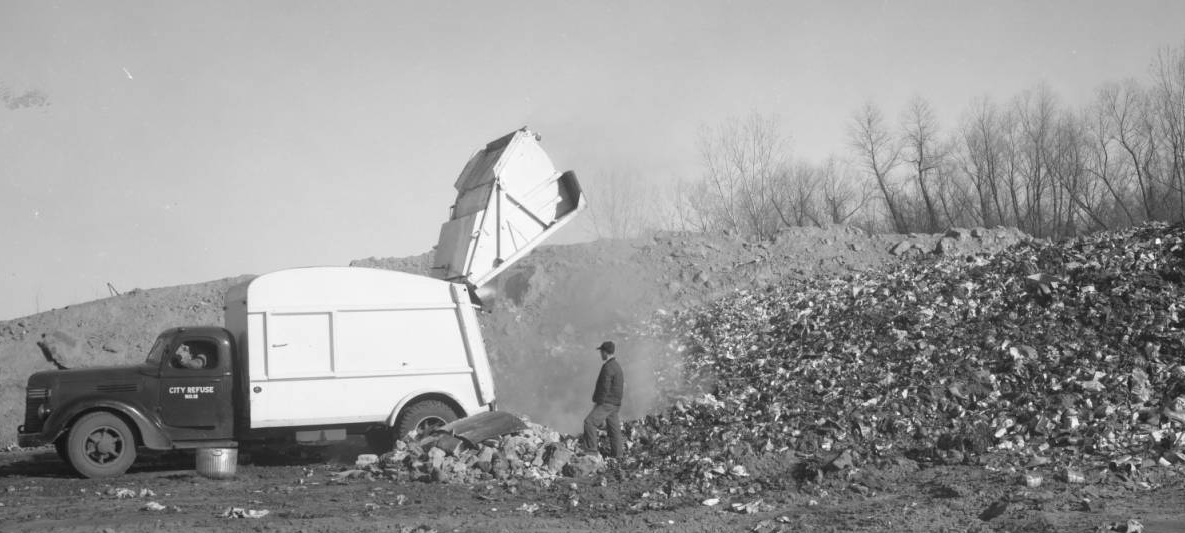
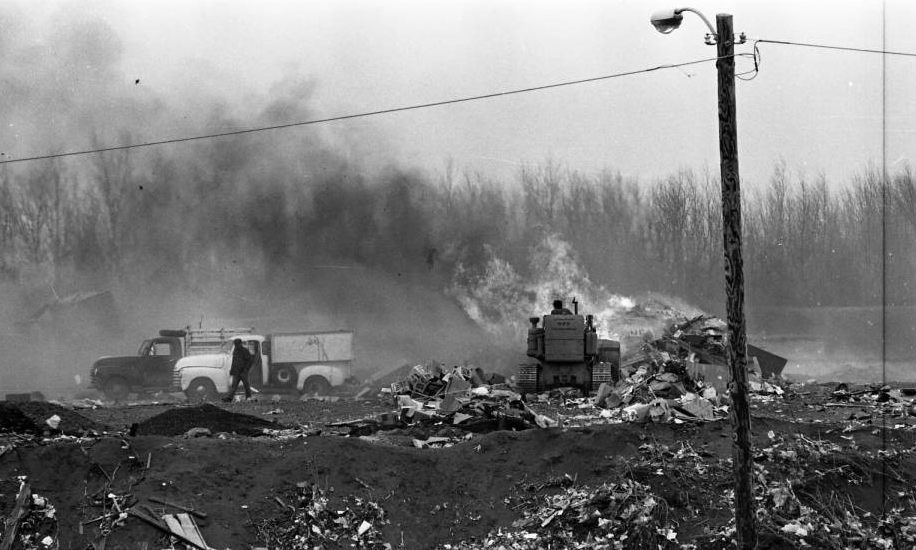


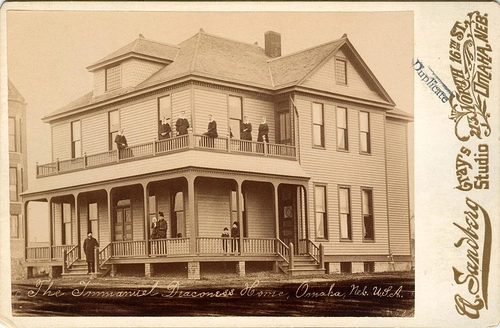

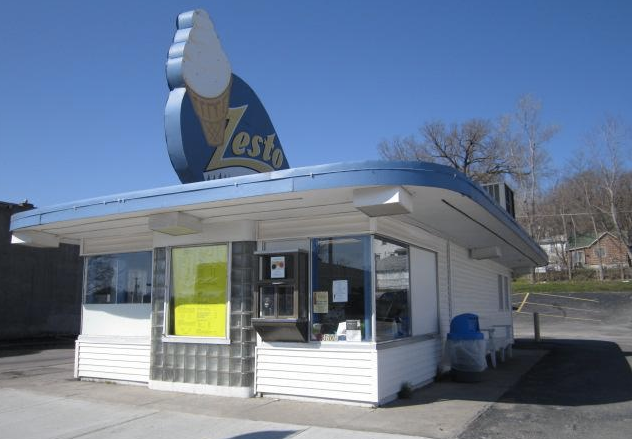
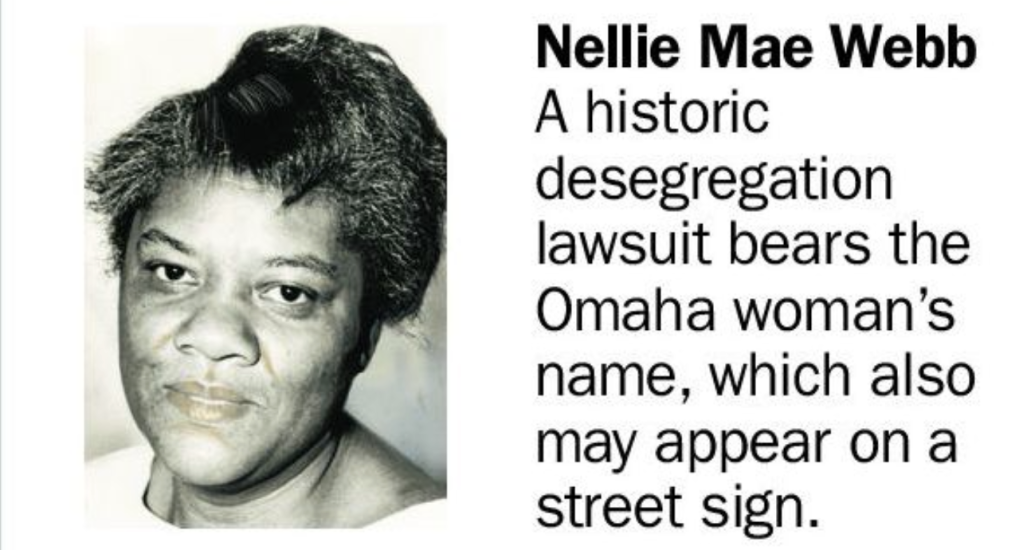
Leave a comment